Clay Art - As Old as Cave Painting

The ample lady in the picture opposite could well be the oldest piece of clay art sculpture in the world. She's called The Venus of Dolní Vestonice. She dates back to the Stone Age.
The history of ceramic art goes back to pre-history, when we were living in caves. On this page we look at how human beings have used clay to make art from caveman to modern times.
The clay venus of Dolni was sculpted somewhere between 27,000 to 31,000 years ago - technically known as the Gravettian period of the upper Palaeolithic (late Stone Age).
It was found in modern times somewhere in deepest Europe (Czech Republic). The age of this figurative clay art is mind-blowing.
To put it into perspective, modern man (i.e. Homo Sapiens) is thought to have evolved around only 130,000 years ago.
Why We Like Clay Art
Clearly, getting our hands dirty with clay is important, evolving with our development of more sophisticated tools (which experts say started around 50,000 years ago).
So working with clay is primeval, one of the earliest forms of artistic expression. Fire is our single most important tool for survival. Offering our art up to the flames seems a natural progression.
Today, there is still a sense of mystique even though we might take the complex technology and craft for granted somewhat.
Yet despite that, somewhere in our psyche, we still value ceramic items highly.
That is, whether they are old or hot off the bone china production line.

From Mud to Ming
A 'Ming vase' is synonymous with high value. However, a Ming vase is a relative newcomer in the clay art stakes, being a mere 500 years old.
30,000 years of steady pottery evolution takes you from a mud fertility lady to a piece of Ming Dynasty high porcelain art. Quite a leap.
Ancient Chinese civilization is the undisputed champion of high art porcelain, and they were very much ahead of the rest of the world.
But in neighbouring Japan, the Jomon people were making richly decorated figurines over 10,000 years ago.
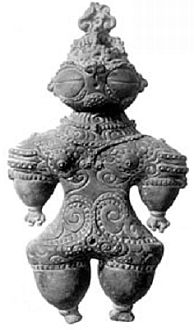
The term "Jomon" means "cord-marked" in Japanese.
So the 'Jomon' name refers to decorations made on figurines and other clay pieces using specially made tools from cord and string.
2000 Year Old Terracotta Warriors
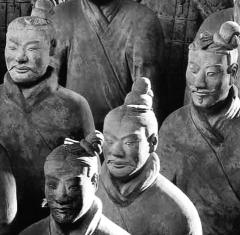
Terracotta Warriors of the Qin (Chin) Dynasty date from 210 BC. - a mere couple of thousand years ago compared with the 10,000 years of the Jomon.
These life-size works of clay art are breathtaking. The artistry, scale and ambition of these works defy belief. They were made for the 1st Emperor of China, Chin Shi Huang Di.
He did not do things by half. He conquered and became the new leader of many different warring states of the Orient. He built the wall of China, commissioned 8000 clay warriors to be sculpted for his tomb, and made sure his 3000 wives were killed after his death.
Tang Sancai
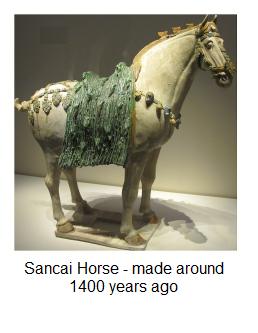
Moving on 400 years, who would not admire the beauty of the Sancai horses dating from the Tang Dynasty (618 – 907 AD).
These are not life size as the terracotta horses which accompany the Qin warriors, but about 25 - 30 inches high.
Sometimes Tang horses are referred to as 'egg-and-spinach' ware because of the use of green, amber and off-white/cream.
Stunningly beautiful and sophisticated creations in clay from a very long time ago.
Blue & White Ware
The blue & white wares of China were already famous in the West in the 1700's. When first Meissen, then Sevres, then the English firms started to learn to make this look themselves it became known a 'Chinoiserie' (imitations of Chinese art).
However, the Chinese had been at it a long time. Blue and white had been invented at around the same time as the Tang Horses, over a 1000 years ago.
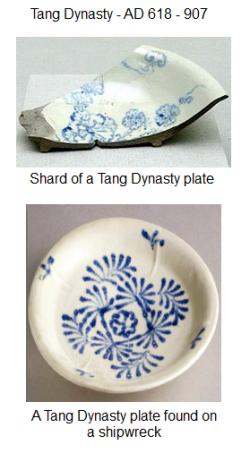
About 1000 years later, Tenkei blue-and-white ware was developed.
Ironically, this ware became referred to as “old blue and white”, even though it came from 17th century not the 7th like the Tang blue and white.
The blue and white technique involves white porcelain being decorated with blue under the glaze.
Of the earliest blue & white, only three complete pieces of Tang blue and white porcelain remain in the whole world, and they were salvaged from an ancient shipwreck off the coast of Indonesia in 1999.
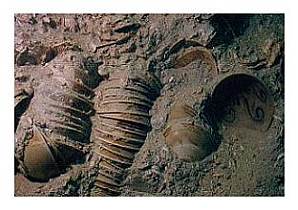
The First Porcelains
An early proto-porcelain made with Kaolin (one of the main ingredients of porcelain) has been dated to the Shang Dynasty (17th - 11th century BC).
The earliest true Chinese porcelain is thought to date from the late Eastern Han period (100 to 200 AD).
It was in the reign of Emperor Kangxi (1653-1722) what we would recognise as porcelain was developed to a fine art.
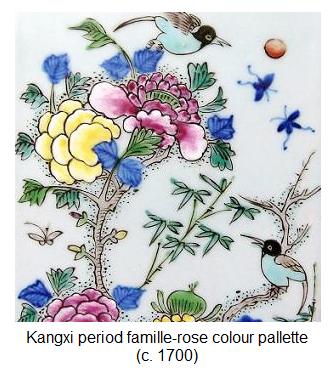
Intricate and advanced use of use of families of soft
multi-coloured enamels on complex shapes on white ground, gave rise to
the term 'famille' in association with with different 'palettes'.
The most popular palette in the West was the palette of pinks, reds and purples, which became known as 'famille-rose'
Where Are We Now With Clay Art?
Moving forward to the modern day. What are contemporary artists doing with this age old technology?
British clay artist Paul Smith takes ancient myths and tales, as old, or older, than ceramics itself.
Smith weaves them into wonderful and amusing pieces of art
(see Clay Artists section).
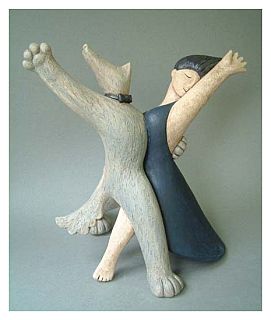
Paul Smith's allegorical work
Clay sculptors today work in many different disciplines, and you would be amazed at the
diversity of artists who work in clay.
There is the art pottery of the studio potters whose feathers are being ruffled by the clay contemporary art potters (winning the Turner Prize!).
Then there is the whole thing about clay and art combining together - does it then become fine art or is it still just a craft?
